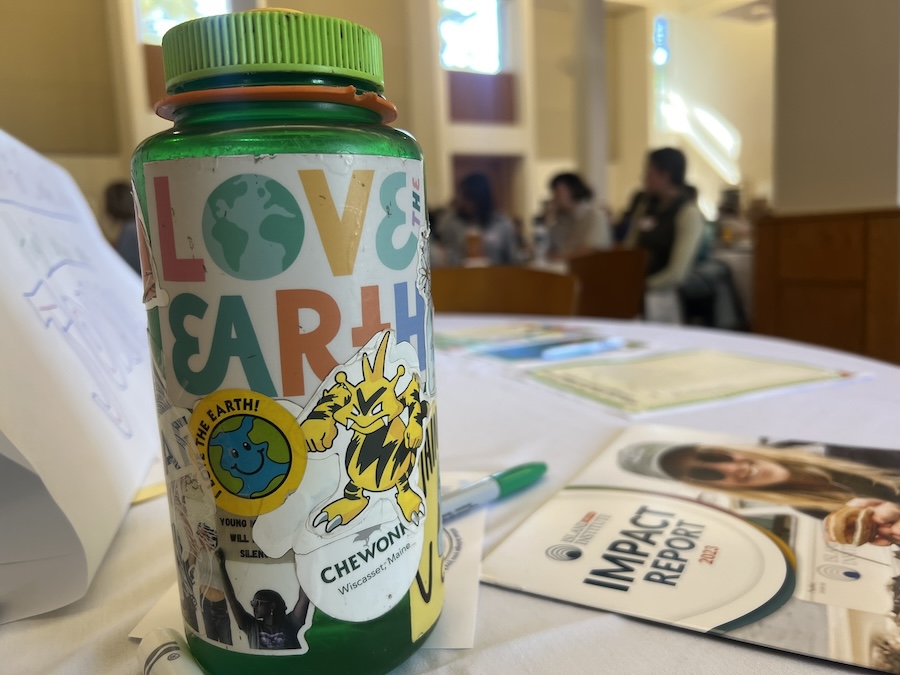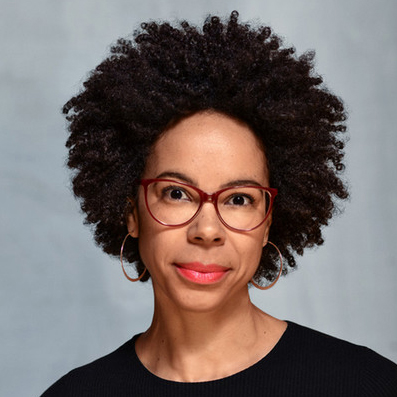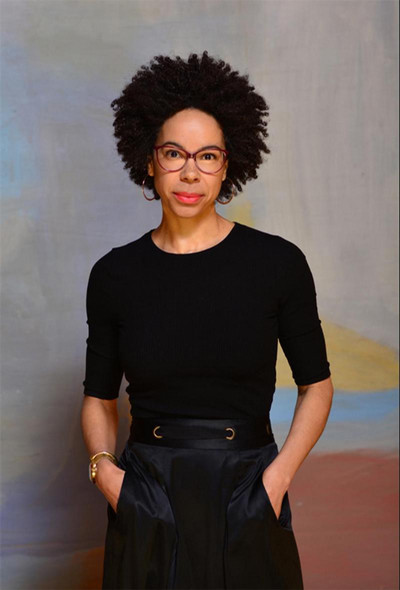Katie Kurtz ’24 Publishes Independent Research in Top Academic Journal
By Rebecca Goldfine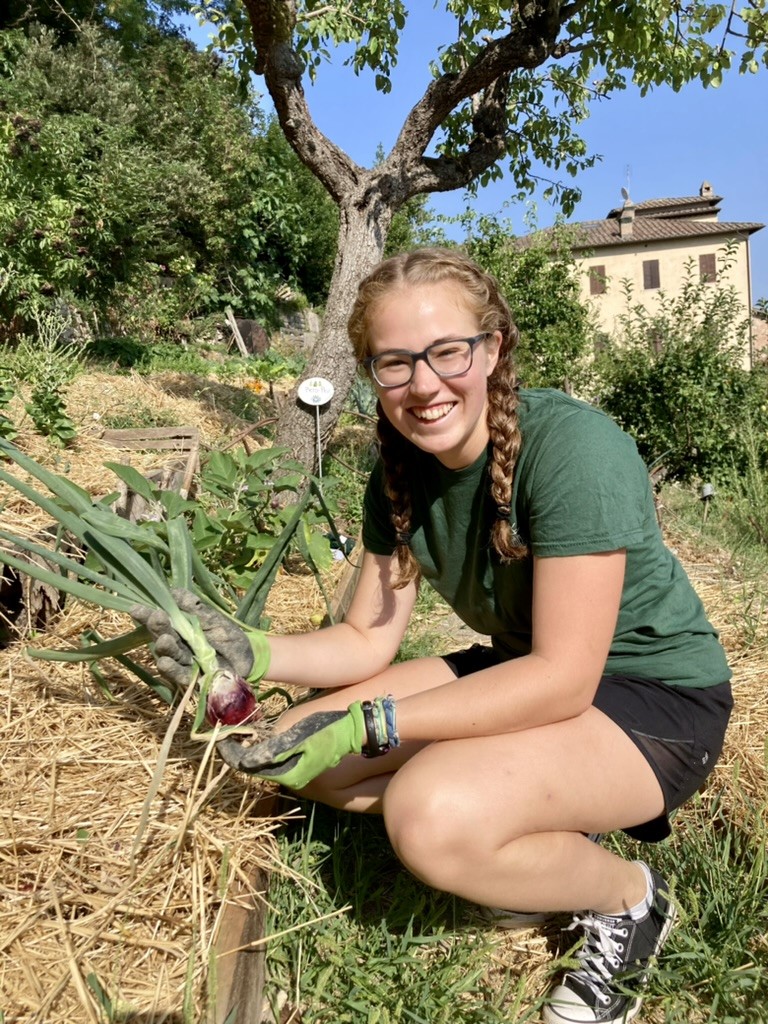
Kurtz is the sole author of the article, “Prendersi Cura: Taking Care of Nature in Perugia, Italy,” which was published online March 20 and will appear in a print volume in June.
In the paper, she argues that cities need to “revisit their conceptions of urban green space management, because currently it is too formal and too rigid,” she explained in a recent interview. “People aren't getting the cultural and social benefits of green spaces.”
One way city parks fail residents, she offers, is by offering an overly manicured experience with a lot of pavement and mowed lawns, preventing “children and family from engaging with Nature in a personal, sensory way.” (In her writing, Kurtz capitalizes nature because she sees it is a constructed concept.) On the flip side, when urban green spaces are unruly and untended, mimicking “untouched wilderness,” they can “sit vacant with not enough resources.”
When parks don't live up to their potential, the culprit is often how the space is managed, Kurtz says, and she points to key differences between formal and informal urban green spaces. Formal green spaces, such as city parks and plazas, “are characterized by top-down formal management, with users who come in and interact with it, but they are very separated from how the place is governed,” she said.
Meanwhile, informal green spaces can be “unplanned, minimally managed spaces,” such as a weedy vacant lot that neighbors turn into a garden. While managed parks can be successful—she identifies Central Park in New York City as a stand-out example—more often an urban green space flourishes when users are invested in the land and have a sense of ownership of it.
For instance, in Denver, Colorado, where Kurtz is from, the park close to her home attracts joggers and occasional pick-up soccer games. “I don’t think the community feels ownership over the park,” she said. “I wish a section of the park was a community garden or had other portions you could interact with more.”
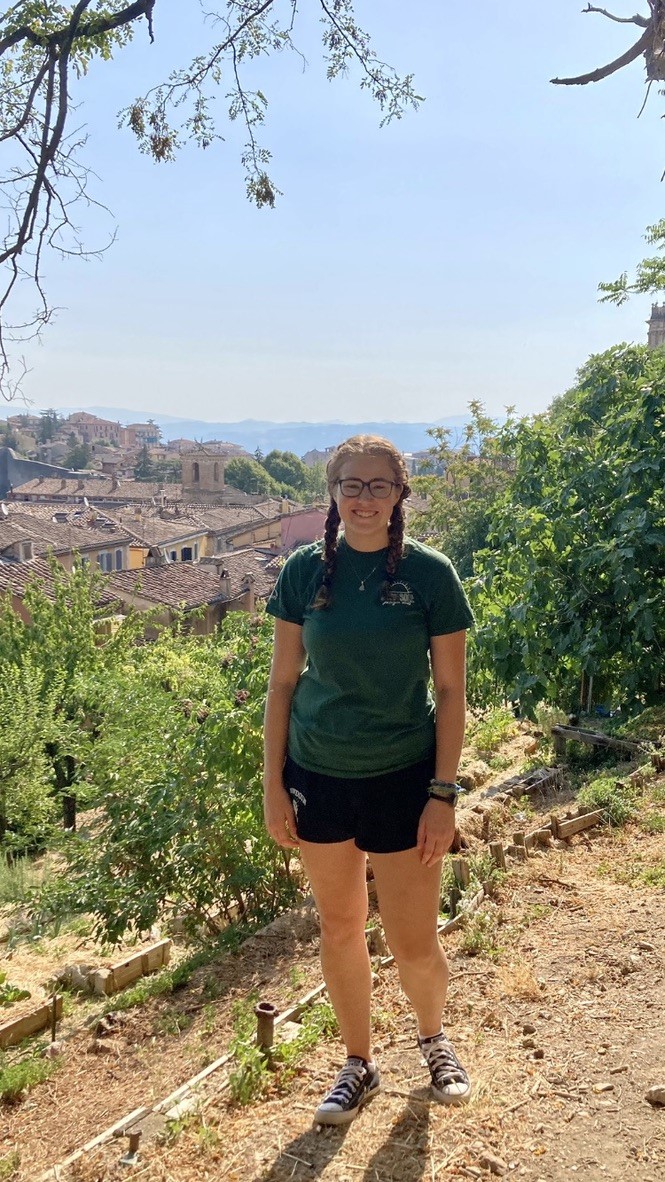
Gardening in an ancient walled city
Kurtz, who is an environmental studies and Italian studies coordinate major and an urban studies minor, spent a summer in Perugia in 2022 conducting research for her article.
Funded by a Cooke Environmental Research Fellowship from Bowdoin, she split her time between building two urban gardens—one for The Umbria Institute and the other for the University of Perugia—and gathering data for her project. She speaks Italian fluently after studying abroad her junior year of high school in Viterbo, a small medieval city ninety minutes north of Rome.
In Perugia, she interviewed thirteen subjects, some directly tied to green spaces and others informally so, and asked them a series of questions. Among these were, "What does Nature mean to you? Do you go to parks near you? What other parks do you go to? What do you do in them?”
She was curious whether her subjects would demonstrate a culturally influenced way of thinking about green spaces, “one that would help explain the difference between a top-down management structure, which is the American way, and a bottom-up structure,” common in Italy.
After returning to Bowdoin, she dedicated time to analyzing her interviews and her participant observation data, and she worked on backing up her qualitative research with quantitative data. In the fall of 2022, she took professor Eileen Johnson's course GIS and Remote Sensing: Understanding Place, and mapped both the spaces Perugia officials recognize as parks and the informal green spaces her interviewees noted as important. “They didn’t overlap!” she said. “For example, the city identifies a piazza in the middle of the city as a green space, but the residents didn’t mention it. Instead, they mentioned the community garden they go to on weekends to volunteer.”
Last spring, in an independent study with Associate Professor of Digital Humanities Crystal Hall, she transcribed, translated, and analyzed her interviews. In this process, she pulled out intriguing themes.
Her interviews with Perugians revealed trends that she links to Italy’s agricultural history. “In the US, when you think about going into nature, you’re likely imagining wilderness, usually a park, with untouched, pristine land,” she said. However, “in Italy, because of its agricultural base, residents of all ages have a different connection to green space.” When Italians dream of spending a day in the countryside, she said, many still think about returning to family land to picnic or to pick chestnuts or olives, in addition to visiting regional parks.
She highlights another notion that emerged in her research that she calls “prendersi cura,” or “taking care of,” the title of her article. “All thirteen of my interviewees mentioned this concept in relation to green space,” she said. “Everyone thought of nature or vegetation with this active taking-care-of component.”
In her paper, she argues that this is an example of an “active human-Nature relationship” with positive psychological benefits that nurture a sense of connection between people and the planet.
If cities were to both encourage residents to take a more active management role in their parks and offer more support to informal green spaces, Kurtz believes that the end result would be stronger, more resilient communities, as well as spaces that people actually use.
Next year, Kurtz will continue this research with a Fulbright Study/Research Award in Palermo, Italy. “Palermo has a complicated history with green space,” she said. “Many of its parks are failing, a lot of them have actually closed.” She would like to work and study with a grassroots initiative that is partnering with city government to revitalize parks.
“I see this research growing,” she said. “I tell everyone, ‘I think the question about how we redefine nature in cities—so it is more in line with our needs as communities and with sustainability—is what I am going to research for the rest of my life.’”

